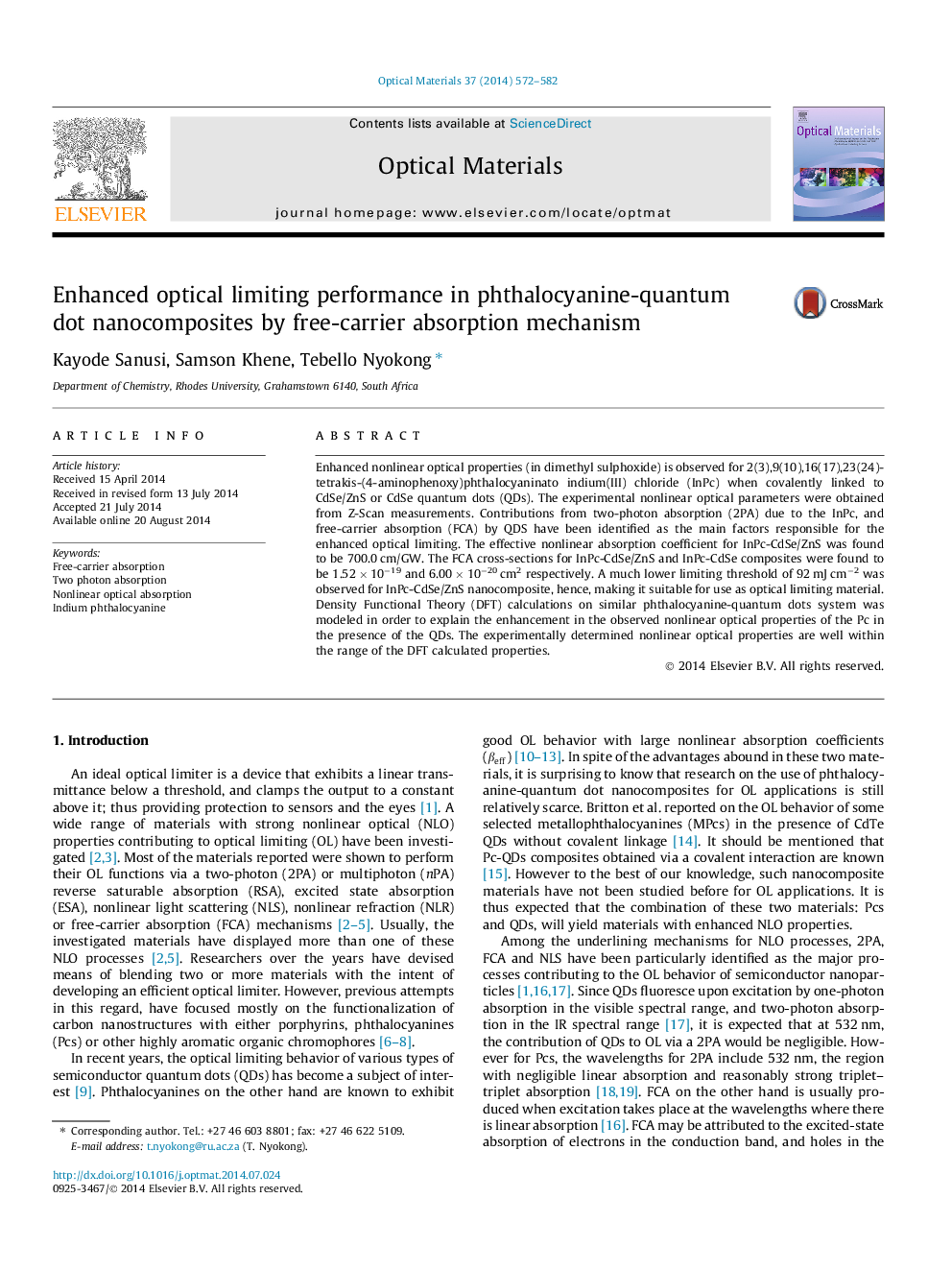| Article ID | Journal | Published Year | Pages | File Type |
|---|---|---|---|---|
| 1494211 | Optical Materials | 2014 | 11 Pages |
•Tetrakis-(4-aminophenoxy)phthalocyaninato indium is linked to quantum dots.•Enhanced optical limiting for the conjugate.•Two-photon absorption and free-carrier contribute to enhanced optical limiting.
Enhanced nonlinear optical properties (in dimethyl sulphoxide) is observed for 2(3),9(10),16(17),23(24)-tetrakis-(4-aminophenoxy)phthalocyaninato indium(III) chloride (InPc) when covalently linked to CdSe/ZnS or CdSe quantum dots (QDs). The experimental nonlinear optical parameters were obtained from Z-Scan measurements. Contributions from two-photon absorption (2PA) due to the InPc, and free-carrier absorption (FCA) by QDS have been identified as the main factors responsible for the enhanced optical limiting. The effective nonlinear absorption coefficient for InPc-CdSe/ZnS was found to be 700.0 cm/GW. The FCA cross-sections for InPc-CdSe/ZnS and InPc-CdSe composites were found to be 1.52 × 10−19 and 6.00 × 10−20 cm2 respectively. A much lower limiting threshold of 92 mJ cm−2 was observed for InPc-CdSe/ZnS nanocomposite, hence, making it suitable for use as optical limiting material. Density Functional Theory (DFT) calculations on similar phthalocyanine-quantum dots system was modeled in order to explain the enhancement in the observed nonlinear optical properties of the Pc in the presence of the QDs. The experimentally determined nonlinear optical properties are well within the range of the DFT calculated properties.
